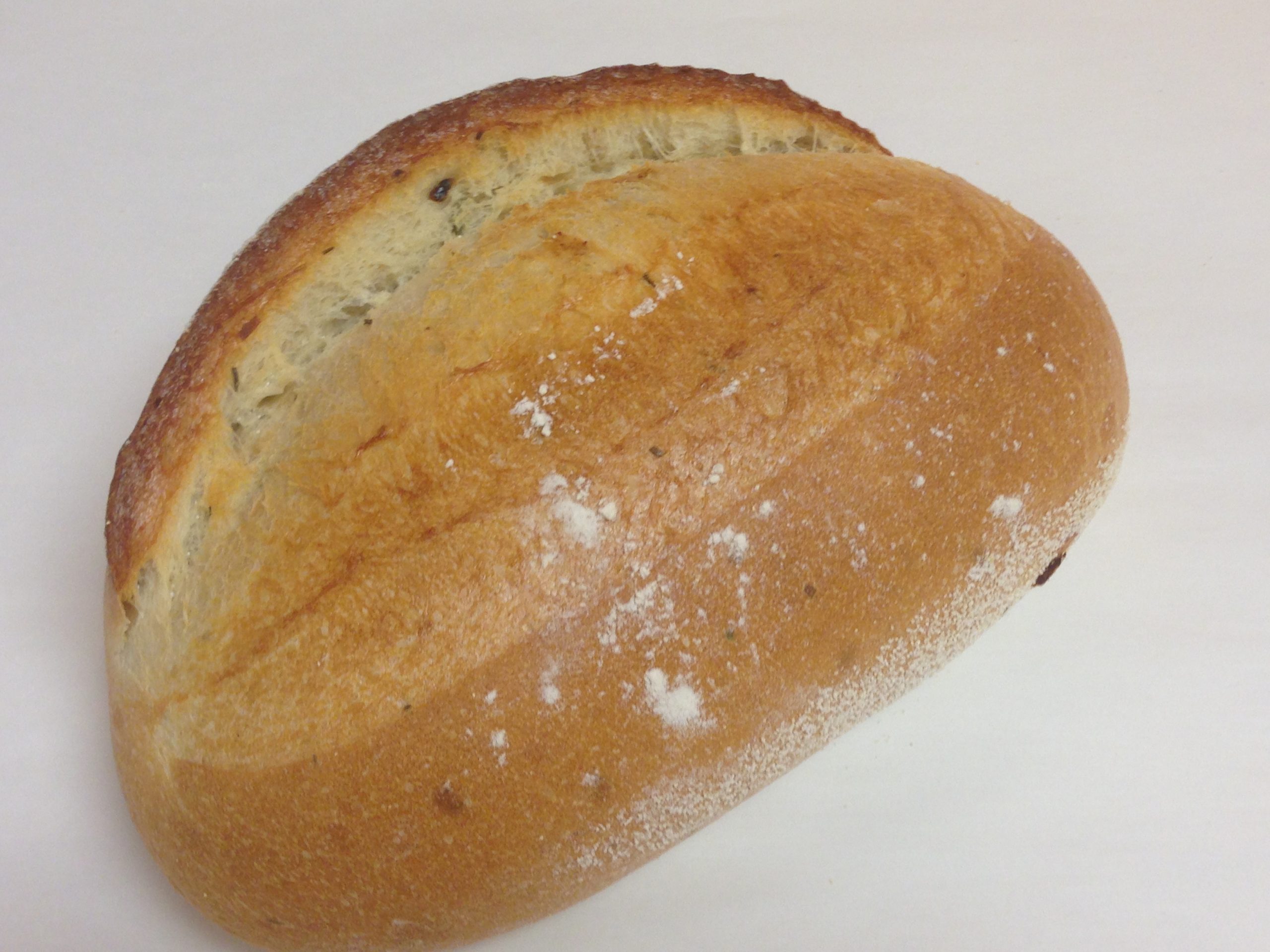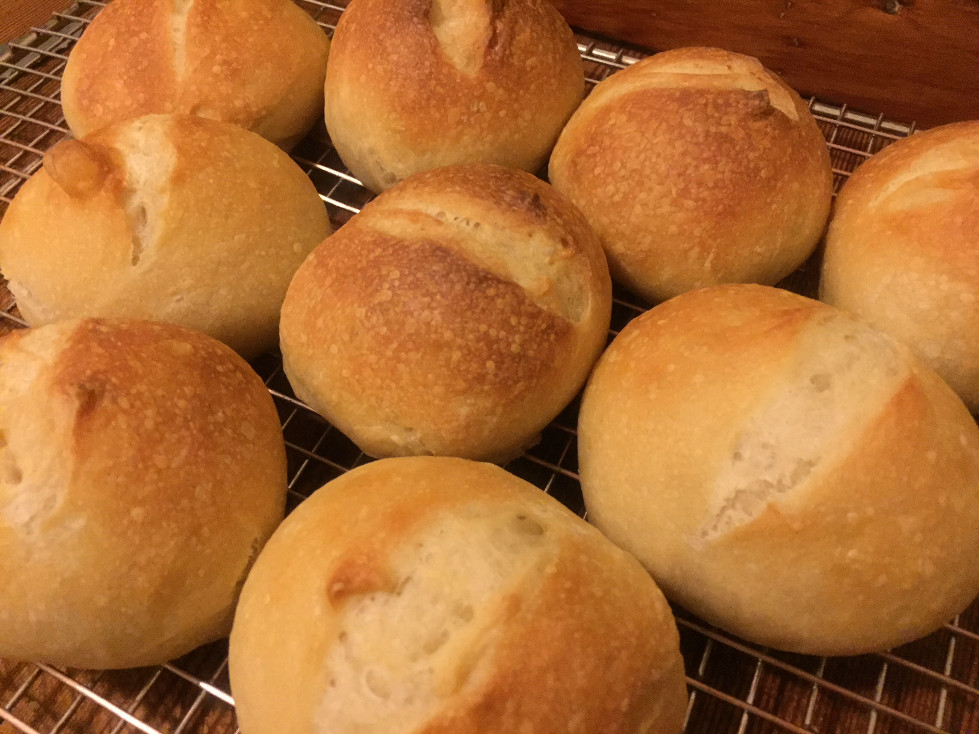In the realm of bread-making, hard rolls stand as a testament to the transformative power of simple ingredients. From the bustling bakeries of Europe to the home kitchens of countless enthusiasts, these crisp and crusty delights have captured hearts and palates alike.
Join us on a culinary adventure as we delve into the origins, techniques, and endless possibilities of hard roll recipes.
From the humble beginnings in ancient civilizations to their starring role in contemporary cuisine, hard rolls have played an integral part in shaping culinary traditions across the globe. Their versatility knows no bounds, gracing dinner tables as sandwich heroes, burger companions, and delectable additions to soups and stews.
With a symphony of flavors and textures, hard rolls elevate any meal to an unforgettable experience.
Ingredients and Their Functions

Crafting hard rolls involves a careful selection of ingredients, each playing a crucial role in shaping the final product. Flour, water, yeast, salt, and sugar form the foundation of a basic hard roll recipe, contributing unique characteristics to the dough and resulting loaf.
Flour
Flour, the backbone of hard rolls, provides structure and acts as a binding agent. Different types of flour, such as bread flour, all-purpose flour, and whole wheat flour, offer distinct properties that influence the final texture, flavor, and appearance of the rolls.
- Bread flour: With a higher protein content, bread flour produces a stronger gluten network, resulting in a chewy and crusty texture.
- All-purpose flour: A versatile choice, all-purpose flour offers a balanced blend of protein and starch, yielding a moderately chewy and crispy texture.
- Whole wheat flour: Incorporating whole wheat flour introduces a nutty flavor and increased fiber content, resulting in a denser and more rustic loaf.
Water
Water hydrates the flour, activating the proteins and gluten, and facilitating the fermentation process. The amount of water used significantly impacts the dough’s consistency and the final texture of the rolls.
Yeast
Yeast, a crucial leavening agent, consumes the sugars in the dough, releasing carbon dioxide and alcohol as byproducts. This process causes the dough to rise, creating the characteristic air pockets and light texture associated with hard rolls.
Salt
Salt enhances the flavor of the rolls and plays a vital role in controlling yeast activity. It slows down the fermentation process, allowing the dough to develop a more complex flavor profile and a tighter crumb structure.
Sugar
Sugar provides nourishment for the yeast, aiding in its growth and fermentation. Additionally, sugar contributes to the browning process during baking, resulting in a golden-brown crust.
Troubleshooting Common Issues
The path to perfectly baked hard rolls is not without its challenges. Common issues such as dense or crumbly texture, uneven browning, or inadequate rising can arise, causing bakers frustration and disappointment. Understanding the underlying causes and implementing practical remedies can turn these obstacles into opportunities for learning and improvement.
Dense or Crumbly Texture
Dense or crumbly hard rolls can result from several factors. Over-mixing the dough can lead to the development of gluten, resulting in a tough texture. Insufficient kneading, on the other hand, can result in a crumbly texture due to the lack of gluten development.
Additionally, using too much flour or not allowing the dough to rise properly can contribute to a dense texture.
- Solution: Mix the dough just until it comes together to avoid over-development of gluten. Knead the dough for the recommended time to ensure proper gluten development. Measure flour accurately and follow the recipe’s instructions for rising times.
Uneven Browning
Uneven browning can occur when the oven temperature is too high or when the rolls are not placed in the center of the oven. Additionally, overcrowding the baking sheet can prevent proper air circulation, resulting in uneven browning.
- Solution: Preheat the oven to the correct temperature and place the rolls in the center of the oven. Ensure there is enough space between the rolls on the baking sheet to allow for proper air circulation.
Inadequate Rising
Inadequate rising can be caused by several factors, including using old or inactive yeast, not allowing the dough to rise in a warm enough environment, or adding too much salt to the dough. Salt can inhibit the activity of yeast, preventing the dough from rising properly.
- Solution: Use fresh, active yeast and follow the recipe’s instructions for rising times and temperatures. Measure salt accurately to avoid inhibiting the activity of yeast.
Proper measuring, mixing techniques, and oven temperature are crucial for achieving successful results. Using accurate measuring cups and spoons ensures the correct proportions of ingredients, while proper mixing techniques help develop the gluten in the dough and create a smooth, elastic texture.
Baking the rolls at the correct temperature ensures even browning and prevents over- or under-baking.
Variations and Creative Ideas

The classic hard roll recipe provides a versatile base for culinary exploration. Let’s delve into creative variations and ideas to transform your hard rolls into delightful culinary creations.
Flour Variations
Experiment with different types of flour to alter the texture, flavor, and nutritional profile of your hard rolls. Whole wheat flour adds a nutty flavor and increased fiber, while rye flour imparts a slightly sour tang and dense texture. For a rustic appearance, try incorporating bread flour, which yields a chewy crumb and crispy crust.
Seeds, Nuts, and Herbs
Incorporate a variety of seeds, nuts, and herbs to enhance the taste and texture of your hard rolls. Sesame seeds, poppy seeds, and sunflower seeds add a delightful crunch, while walnuts, pecans, and almonds provide a nutty flavor and richness.
Herbs like rosemary, thyme, and oregano infuse the rolls with aromatic notes.
Flavored Hard Rolls
Create a symphony of flavors by experimenting with flavored hard rolls. Garlic-herb rolls are a savory delight, infused with the aromatic blend of garlic, parsley, and thyme. Cheese rolls, filled with gooey cheddar or Parmesan, are perfect for a quick snack or as a side dish.
For a sweet treat, try cinnamon-raisin rolls, swirled with cinnamon sugar and studded with plump raisins.
Creative Uses
Beyond the classic sandwich or burger bun, hard rolls can be incorporated into a variety of dishes, adding a touch of rustic charm and versatility. Cut them into cubes and toast them to create croutons for salads or soups. Transform them into bread pudding, a comforting dessert that combines the flavors of bread, custard, and spices.
Alternatively, slice them and grill them for a crispy bruschetta base, topped with fresh tomatoes, basil, and a drizzle of olive oil.
Final Conclusion
As we bid farewell to our exploration of hard roll recipes, let the newfound knowledge and inspiration guide your culinary adventures. Experiment with different flours, seeds, and flavorings to create a symphony of flavors that tantalize the taste buds. Remember, the true joy of baking lies in the journey itself – the mixing, kneading, and shaping of humble ingredients into something extraordinary.
Embrace the process, savor the results, and share the joy of homemade hard rolls with those you love.
FAQ Summary
What are the key ingredients in a basic hard roll recipe?
Flour, water, yeast, salt, and sugar form the foundation of a classic hard roll recipe. Each ingredient plays a crucial role in creating the perfect texture, flavor, and rise.
How does yeast contribute to the texture and flavor of hard rolls?
Yeast is the magical ingredient that brings life to hard rolls. Through the process of fermentation, yeast consumes the sugars in the dough, releasing carbon dioxide gas. This gas creates air pockets, resulting in the characteristic light and airy texture of hard rolls.
Additionally, yeast contributes subtle yeasty notes that enhance the overall flavor profile.
What are some creative variations of the basic hard roll recipe?
The world of hard rolls is a canvas for creativity. Experiment with different types of flour, such as whole wheat or rye, to add depth and texture. Incorporate seeds like sesame or sunflower for a nutty crunch. Elevate the flavor with herbs like rosemary or thyme, or add a touch of sweetness with dried fruits or nuts.
How can I troubleshoot common issues like dense or crumbly texture in hard rolls?
Achieving the perfect hard roll requires attention to detail. If you encounter dense or crumbly texture, consider factors like proper measuring, mixing techniques, and oven temperature. Ensure accurate measurements, mix the dough thoroughly, and allow it to rise in a warm environment.
Additionally, preheating the oven to the correct temperature is essential for an even bake.
